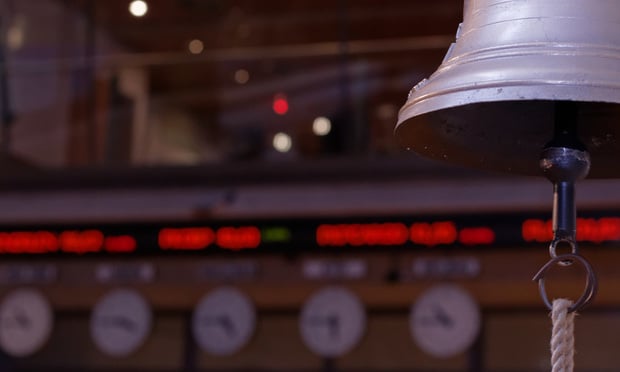 The fewer companies that ring the opening day bell, the fewer insurers must write public D&O insurance policies. However, there's a unique twist happening at the moment that are signal a softening of the D&O insurance market. (Credit: MOZCO Mat Szymański/Stock.adobe.com)
The fewer companies that ring the opening day bell, the fewer insurers must write public D&O insurance policies. However, there's a unique twist happening at the moment that are signal a softening of the D&O insurance market. (Credit: MOZCO Mat Szymański/Stock.adobe.com)
In the wake of a global pandemic, valuations bloated, and venture capital (VC) investments spiked at around $643 billion. Additionally, the U.S. welcomed more than 580 unicorns and rolled out more than 1,030 IPOs, though half were SPACs. We haven't even topped 200 IPOs for 2022, a stark contrast to the "miracle year" before. With the sour taste of a hard D&O insurance market lingering, we can only wonder how shrinking IPO activity impacts this space. Let's talk about these dynamics and what to expect in the future.
|Making sense of changing market trends
The IPO market quickly went from a boom to a bust, with investors being more risk-averse than the previous year. High inflation and increasing interest rates have scared some investor's heads in the sand, motivating them to focus on safer alternatives with more potential for profit.
Recommended For You
Want to continue reading?
Become a Free PropertyCasualty360 Digital Reader
Your access to unlimited PropertyCasualty360 content isn’t changing.
Once you are an ALM digital member, you’ll receive:
- Breaking insurance news and analysis, on-site and via our newsletters and custom alerts
- Weekly Insurance Speak podcast featuring exclusive interviews with industry leaders
- Educational webcasts, white papers, and ebooks from industry thought leaders
- Critical converage of the employee benefits and financial advisory markets on our other ALM sites, BenefitsPRO and ThinkAdvisor
Already have an account? Sign In Now
© Touchpoint Markets, All Rights Reserved. Request academic re-use from www.copyright.com. All other uses, submit a request to [email protected]. For more inforrmation visit Asset & Logo Licensing.







